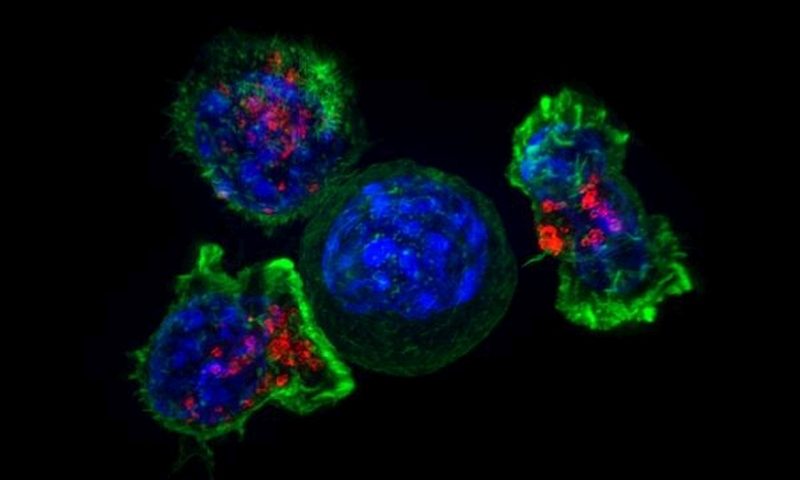Genetically engineered T cells have been successful in treating blood cancers but have yielded limited benefits in solid tumors. Scientists have explored different combination strategies to overcome the problem but faced disappointing efficacy or unacceptable side effects.
Previous studies have shown that the tumor microenvironment, with its lack of oxygen and nutrients, poses a hostile metabolic state that impedes T-cell infiltration and proper functioning, contributing to the inability of the therapies to wage an attack on solid tumors.
Now, two research teams have come up with potential solutions to this problem that have shown promise in animal models of glioblastoma and melanoma.
One team at the University of Pennsylvania combined T cells with a drug that inhibits an enzyme called PAK4. The enzyme facilitates a process by which the cells that line blood vessels are genetically reprogrammed, causing excessive growth of the vasculature that feeds tumors. Knocking out PAK4 in mouse models of glioblastoma reduced that vascularity and improved the ability of T cells to reach tumors, the team reported in Nature Cancer.
About 80% of the mice that lacked PAK4 survived for two months after the experiment, while their non-altered counterparts died within 40 days, the Penn team said. Combining a PAK4-inhibiting drug with EGFRvIII-targeted CAR T cells was also effective, prompting an 80% reduction in tumor growth in the animals.
“Importantly, this may not only be limited to brain tumors; it could potentially be used for all types, including breast, pancreatic, and others, because vascular abnormality is a common feature for almost every solid tumor,” said Yi Fan, Ph.D., an associate professor of Radiation Oncology in Penn’s Perelman School of Medicine, in a statement.
T-cell metabolism is known to depend on the amount of cholesterol on the cell membrane, which regulates T-cell receptor (TCR) clustering, an important step in activation. So a research team at the China Pharmaceutical University (CPU) designed T cells with little “backpacks” containing a cholesterol drug. T cells armed with these packages showed strong anti-tumor effects in mouse models of melanoma and glioblastoma, according to results published in Science Translational Medicine.
The researchers zoomed in on the enzyme ACAT1, which can elevate plasma membrane cholesterol concentration. They decided to attach a small-molecule drug called avasimibe to the T cells using a technique called “click” engineering, which allowed them to anchor the drugs onto the T cell surface using lipids that don’t disrupt the normal functions of the engineered cells.
In lab dishes, the avasimibe-anchored CD8+ T cells killed nearly 80% of melanoma cells at 2 days, whereas unconjugated T cells only nixed about 50% of cancer cells.
The team went on to test the technique in mice. About half of the rodents treated with the backpacked T cells survived for at least 63 days, while no mice that received dual administration of T cells and liposomal avasimibe lived beyond 53 days. In another mouse model of an aggressive form of brain cancer, the researchers leveraged their backpack approach to generate avasimibe-bearing CAR-T cells. Three of five mice that got the novel therapy survived to 100 days, but mice from all other groups survived no more than 70 days.
The CPU researchers believe click-engineered T cells provide an alternative combination strategy for enhancing immunotherapy for solid tumors. What’s more, this cell-surface engineering can be “easily tailored to other combinations of cell therapy and clinically approved metabolic drugs and/or antibodies,” the authors wrote in the study.

